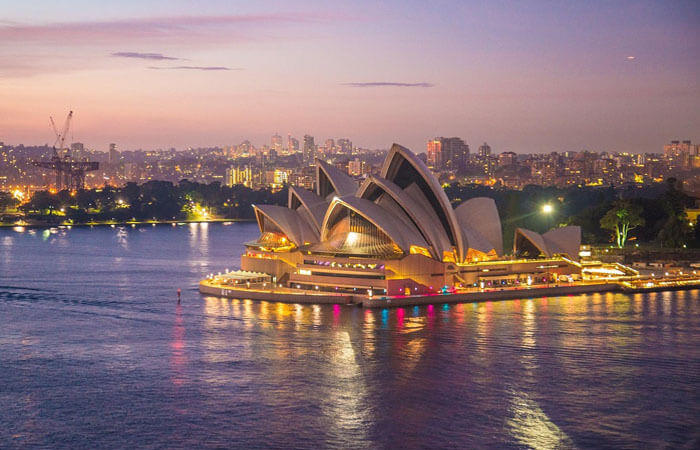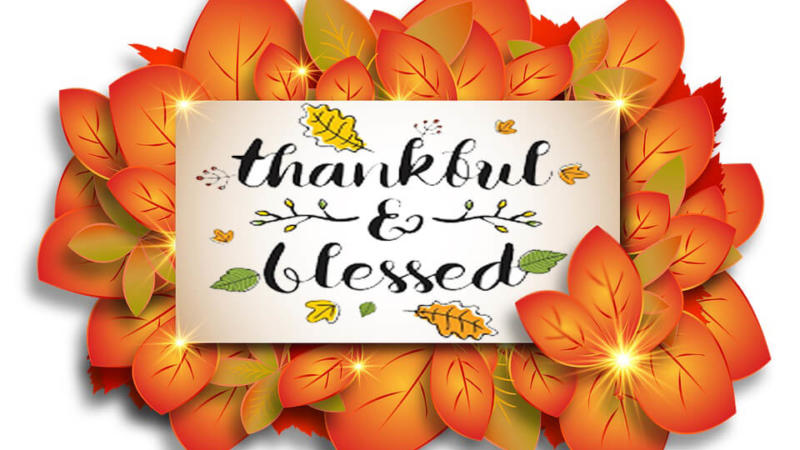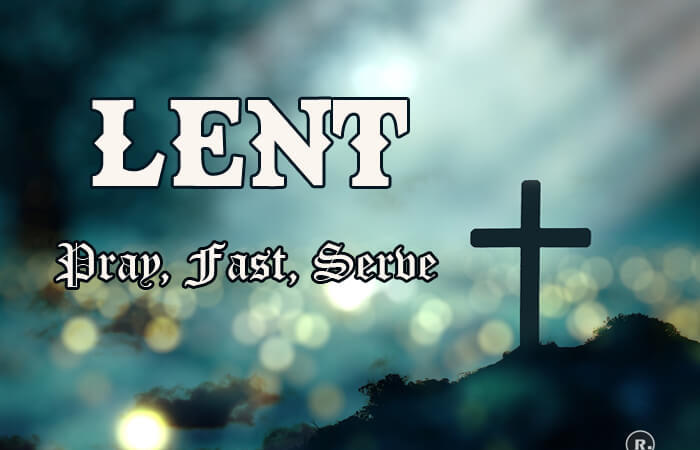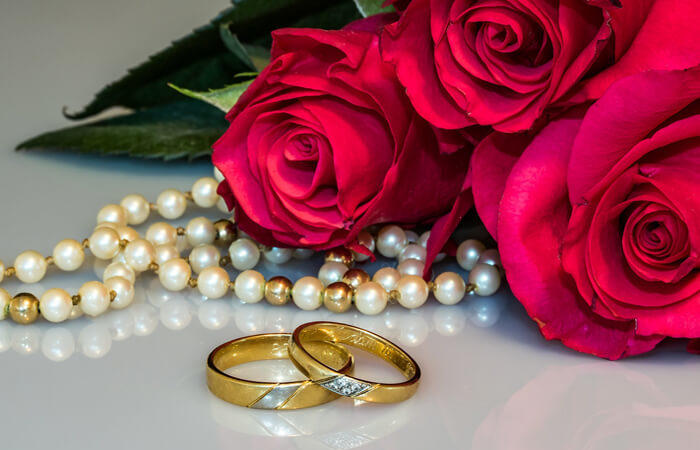Easter Tradition Around The World

Easter is related to the story of sacrifice and also to a new beginning and hope, a time for celebrating new life. It falls between late March and late April on the first Sunday after spring in the Northern hemisphere and autumn in the Southern hemisphere.
Easter is a Christian celebration, but not all Christians celebrate Easter at the same time. The Catholic Easter was in March and the Orthodox Easter will be at the end of April. Why this difference? Because of the different calendars used by the churches to calculate the Easter dates. Orthodox Churches use the Julian calendar named after Julius Caesar. This is usually referred to as the “Old Style” calendar and it was the official calendar from 45 B.C. to 1582 A.D, when it was replaced with the Gregorian calendar. The Gregorian calendar is the official calendar used around the world today.
Countries around the world celebrate Easter according to their own traditions and religious beliefs.
Australia

In Australia, we celebrate Easter over a four-day long weekend. The weekend begins on Good Friday and ends with Easter Monday. Many Christians go to church on Good Friday or Easter Sunday. Easter Sunday is usually celebrated with the giving of chocolate Easter eggs and with chocolate bilbies instead of the traditional chocolate rabbit. Like rabbits, the Easter bilby has long pointy ears and fine fur. The bilby their preferred creature in Australia because rabbits are often viewed as pests that take over the habitat of native animals.
Bermuda
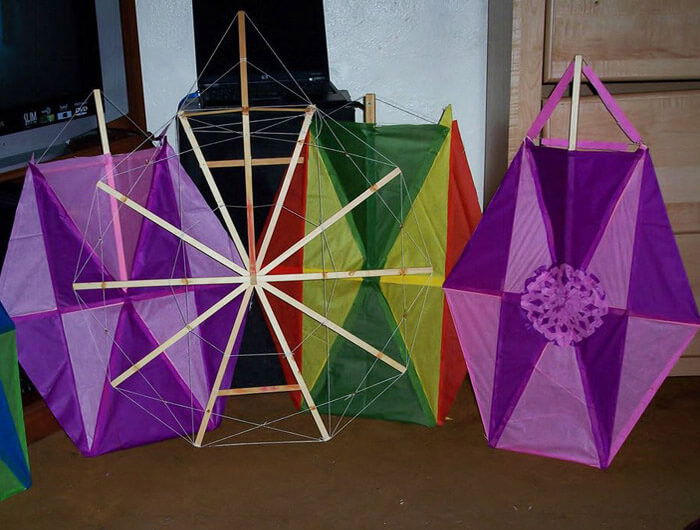
In Bermuda, colorful kites are launched on Good Friday. According to a local story, the tradition started when a Sunday school teacher had trouble explaining Christ’s ascension to heaven to his students, and used a kite to illustrate the idea. Over time, the custom has grown to include an annual kite festival with prizes awarded in different categories. Many of the kites are handmade, hexagonal or octagonal in shape, and some are so large they need multiple people to launch them.
Ethiopia
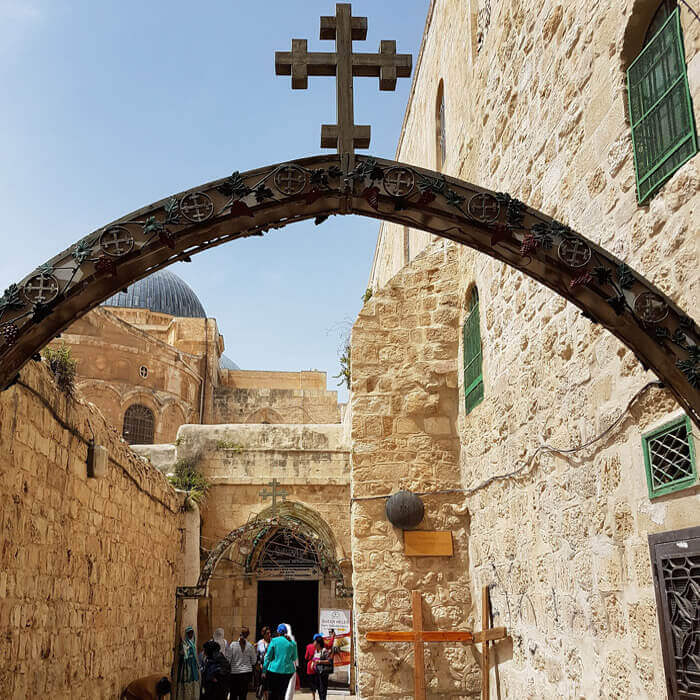
“Fasika” is the Amharic word for Easter, and refers to the 55-days where Ethiopians celebrate their most important festival of the year. This festival, which celebrates the death and resurrection of Jesus Christ, is one of the most longstanding within the Ethiopian Orthodox Church.
Near to Easter their celebration become more intense, Orthodox Christians and Catholics partake in a traditional 55-day fast of all meat and animal products with Good Friday spent in preparation for the breaking of this fast after a morning Church service. This is extremely similar to Lent in the Western Church, which involves a period of 40 days of fasting in the lead up to Easter Sunday. At midnight a symbolic chicken is killed, and then at 3 am, everybody returns to their houses to break their fast with their family. On Easter Sunday a sheep is killed and after that, people start feasting and celebrating. They have a festive meal and drink tej (honey wine) and tella (home-brewed beer).
France
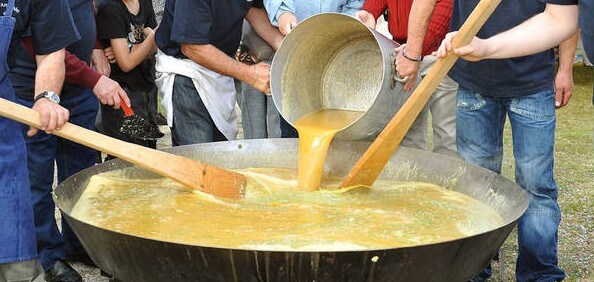
Cloches Volantes (flying bells) are an integral part of the French Easter tradition. No church bells ring in France between Good Friday and Easter Sunday to mark the death of Jesus (and because they’ve all flown to the Vatican!) When the bells return to France they deliver treats to well-behaved children including chocolate eggs. The church bells then ring again to celebrate Jesus’ resurrection. In celebration of The Resurrection, an omelette is traditionally prepared for serving on Easter Sunday. On Easter Monday, in the town of Bessières, France a giant omelet is made with 15,000 eggs.
Finland
Easter Sunday sees the children of Finland have a practice run for trick or treating. If you open your door on Easter Sunday you’ll be faced with a herd of witches at your door who will bless your home by waving their twigs in exchange for a chocolate bar.
Germany
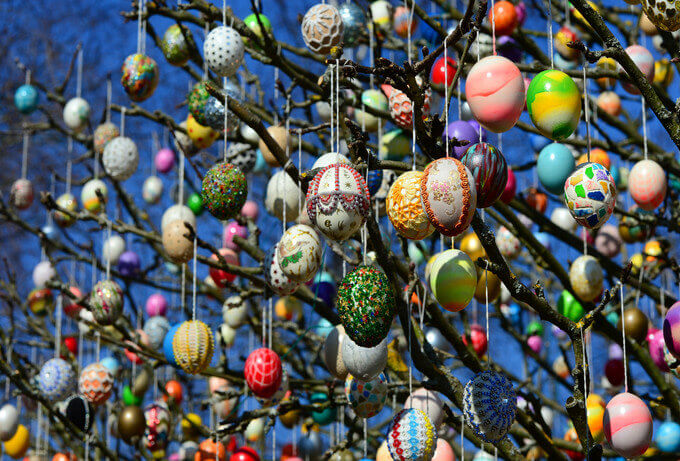
In Germany, Frohe Ostern is how you say ‘Happy Easter’, and the holiday is one of the most celebrated in Germany just like Christmas. In Germany, Easter trees, or twigs and branches, are displayed in homes and they are usually dripping with colorfully decorated eggs. Real eggs are painted and then hung from branches in a vase inside the house. Some people go to huge efforts to cover an entire tree in their garden with these delicate egg ornaments. Many Germans also have an ‘Easter Fire’ where they burn their Christmas tree to show that winter is over and spring is coming.
Hungary
One of the most popular Hungarian Easter traditions is locsolkodás, loosely translated as ‘sprinkling the womenfolk’, practiced in town and countryside. On Easter Monday, boys are allowed to sprinkle girls with water or perfume – traditionally, a bucket of water is thrown on them! – and then the girls offer them painted eggs, homemade treats, or a little shot of alcohol in return. Hungarian Easter eggs are painted in form of Hungarian artisan crafts. Many supermarkets in Hungary sell egg-painting kits, including the necessary paints and dyes, brushes, and design books to provide some inspiration.
Italy
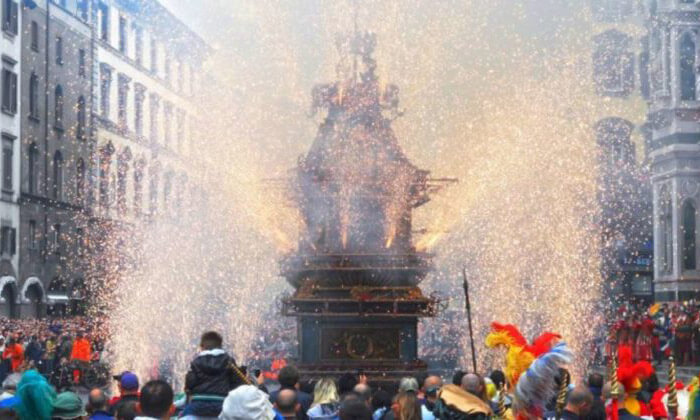
Every Easter Sunday in Italy sees the ‘Scoppio del carro’. This is quite literally the explosion of the cart, an event where a historical cart is loaded with fireworks and explodes in front of thousands of onlookers. The ceremonial cart is pulled through the streets by a pair of oxen to the cathedral where fireworks are set off to celebrate the resurrection of Christ.
Poland
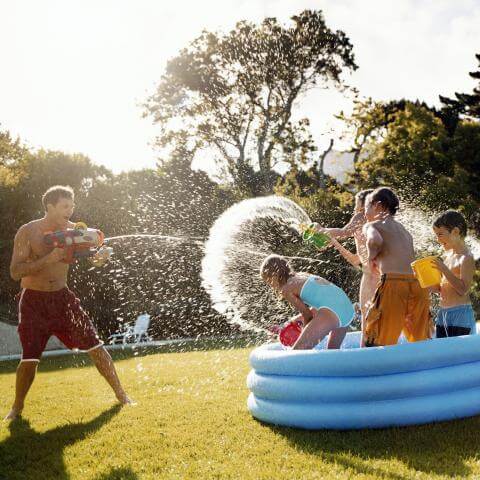
Easter celebrations in Poland begin on Palm Sunday where people gather for a procession with palms in their hands. It can be quite difficult to get hold of palms in Poland and so symbolic substitutes are made instead – they’re normally made from the branches of native trees, including willow, yew, and olive trees, and decorated with ribbons or dried flowers.
In some Polish towns, palm competitions are held, the most famous taking place in Lipnica Murowana, where the highest palm measured to be over 32 meters (105 feet) tall. Wet Monday is also a huge Easter tradition in Poland and takes place annually on Easter Monday. Traditionally, Wet Monday entails boys throwing water over girls as a sign of their affection, however, today it is light-hearted fun.
Philippines
In the Philippines, Holy Week (Semana Santa/Lenten Season) is a big deal so for the entire week the Philippines commemorate the sacrifice, death, and resurrection of the Lord Jesus Christ culminating with Easter Sunday for some festive activities. It’s no so much easter egg hunting as it’s done in the US – but it has more of a religious feel and it’s truly as big as Christmas day. Everyone is happy and celebrates the fact that Christ rose from the dead.
Since from Maundy Thursday, officially everything shuts down for the big Easter weekend, those who work in the big cities in the Philippines get the chance to reunite with their families for the long weekend holiday. Each town with a Catholic church would have religious processions for several days and in our own home town, we have what is a unique festival called – Moriones Festival.
Spain
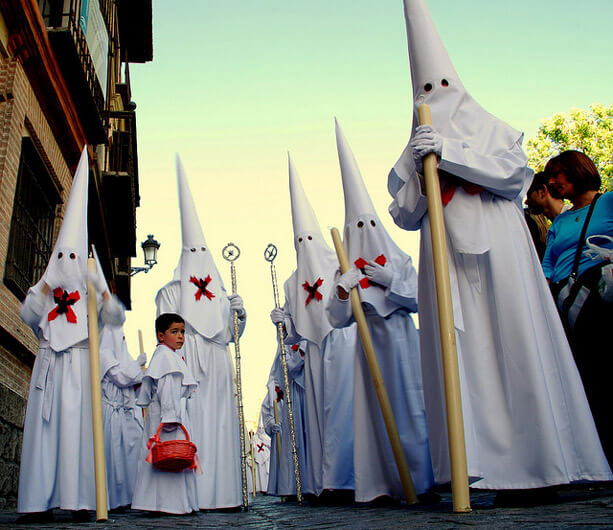
Semana Santa (Holy Week) is also one of the most important religious celebrations in Spain. Semana Santa is a public holiday which means plenty of eating, drinking, and processions. Extraordinary processions take part throughout Holy Week, and they are known as “penance processions”.
Sweden
In Sweden, the excitement for Easter begins on Maundy Thursday where children dress up as witches påskkärringar (Easter hags) and go around their local area with paintings, asking for sweets in return! Originally, it was only girls who would dress up, but today both boys and girls join in the fun. Today, children dress as red-cheeked witches to spread Easter cheer and collect candy before, as the story suggests, flying off on their brooms.
Slovakia
In Slovakia, men travel through the village on Easter Monday, throwing cold water on young women, and then whacking them with willow branches. Tradition says the women should reward the men with gifts of decorated eggs, chocolate, money, or drinks.
USA
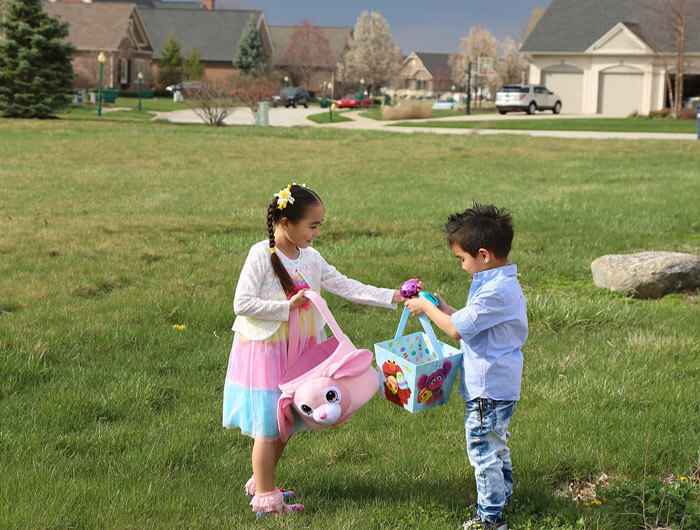
American children will eat jellybeans and hunt for candy-filled eggs hidden by the Easter Bunny. In the USA we can’t imagine Easter without the Easter Bunny. During this time you will find plenty of things to see and do including parades, bumper parties, and jazz music bands. Families usually cook their favorite dish which includes vegetables, potatoes, and ham. Hot cross buns are also a favorite. Easter parades are also a part of the celebrations right across the country with many people dressing up as Easter bunnies and giving out eggs. New Orleans hosts the annual Easter carnival called Mardi Gras.

